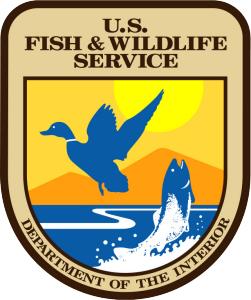 Brussels, Ill. - Two Rivers National Wildlife Refuge managed by the U.S. Fish and Wildlife Service has nearly completed a summer of habitat management in preparation for fall waterfowl migration.
Brussels, Ill. - Two Rivers National Wildlife Refuge managed by the U.S. Fish and Wildlife Service has nearly completed a summer of habitat management in preparation for fall waterfowl migration.
For the first time since 2007 the refuge was able to complete a drawdown of Swan Lake, a large, shallow backwater area of the lower Illinois River near Brussels, Ill. Approximately 2,200 acres of the lake were drained or lowered to allow growth of natural moist soil plants and consolidate loose
materials at the bottom of the lake.
Get The Latest News!
Don't miss our top stories and need-to-know news everyday in your inbox.
“This has been a great growing season for moist soil plants” said Refuge Wildlife Biologist Ken Dalrymple. “We have an abundance of food sources in the lower portion of Swan Lake for waterfowl migration this coming fall and spring. These were the best growing conditions we’ve had since 2007.”
A partial drawdown was completed in the middle portion of Swan Lake to promote growth of submergent plants. One example is Lotus, a plant similar to the more well-known water lily. These plants provide food and shelter to aquatic insects at the base of the food chain.
“Lotus hasn’t grown at the refuge since the 1960s,” said Dalrymple. “The plant is too delicate, and high flood waters, murky water and predation make it difficult for the plant to grow.”
This year there was a successful crop of lotus for most of the summer season.
Similar water drawdowns were performed in the Batchtown and Gilbert Lake Divisions of the refuge. These drawdowns also allowed for many moist soil plants grow on refuge lands along the Mississippi and Illinois Rivers.
The lakes and moist soil units will be re-flooded with river water in early September to make foraging for seeds easier for waterfowl.
The refuge staff was able to perform prescribed burns at a few refuge sites near the visitor center and along Highway 100 north of Grafton. Burning these small areas reduce invasive species and help promote prairie habitat suitable for nesting birds.
In addition to the prescribed burns, some refuge grasslands were mowed or hayed to prevent invasive species from growing.
The refuge acts as an important rest stop for migrating birds on the Mississippi flyway. Bird watchers and visitors can expect to see high numbers of migrating birds especially waterfowl in late October and early November.
The refuge is open during daylight hours Jan. 1-Oct. 15. The refuge visitor center is open year-round Monday through Friday from 8 a.m.-4 p.m.
For more information, call Cortney Solum at 618-883-2524 or email Cortney_Solum@fws.gov.
More like this:
